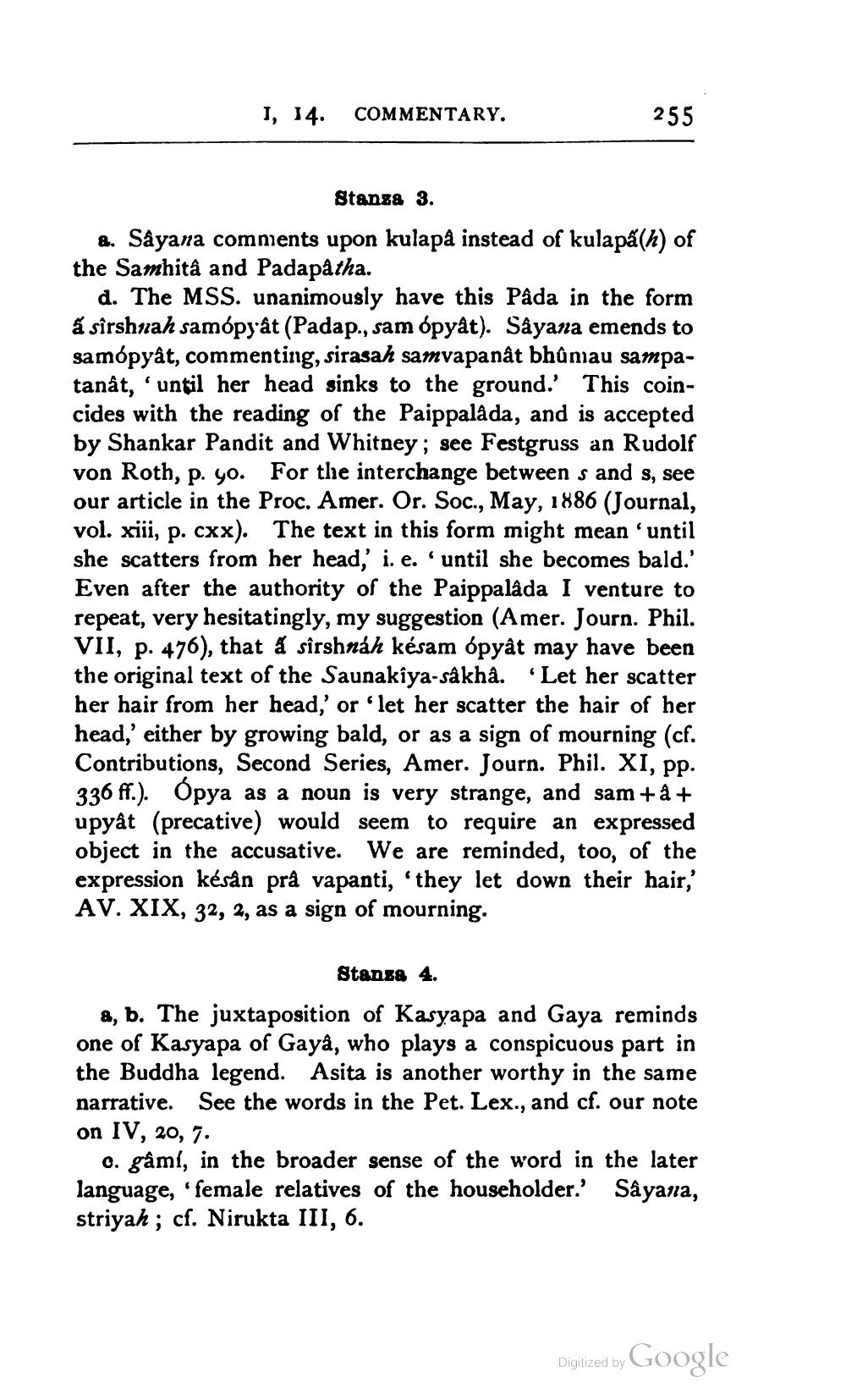________________
I, 14. COMMENTARY.
255
Stanza 3.
a. Sâyana comments upon kulapâ instead of kulapa(k) of the Samhitâ and Padapatha.
d. The MSS. unanimously have this Pâda in the form a sîrshnah samópyât (Padap., sam ópyât). Sâyana emends to samópyât, commenting, sirasah samvapanât bhûniau sampatanât, 'until her head sinks to the ground.' This coincides with the reading of the Paippalâda, and is accepted by Shankar Pandit and Whitney; see Festgruss an Rudolf von Roth, p. yo. For the interchange between s and s, see our article in the Proc. Amer. Or. Soc., May, 1886 (Journal, vol. xiii, p. cxx). The text in this form might mean 'until she scatters from her head,' i. e. until she becomes bald.' Even after the authority of the Paippalâda I venture to repeat, very hesitatingly, my suggestion (Amer. Journ. Phil. VII, p. 476), that á sîrshnáh késam ópyât may have been the original text of the Saunakîya-sâkhâ. 'Let her scatter her hair from her head,' or 'let her scatter the hair of her head,' either by growing bald, or as a sign of mourning (cf. Contributions, Second Series, Amer. Journ. Phil. XI, pp. 336 ff.). Ópya as a noun is very strange, and sam +â+ upyât (precative) would seem to require an expressed object in the accusative. We are reminded, too, of the expression késân prâ vapanti, 'they let down their hair,' AV. XIX, 32, 2, as a sign of mourning.
Stanza 4.
a, b. The juxtaposition of Kasyapa and Gaya reminds one of Kasyapa of Gayâ, who plays a conspicuous part in the Buddha legend. Asita is another worthy in the same narrative. See the words in the Pet. Lex., and cf. our note on IV, 20, 7.
c. gâmí, in the broader sense of the word in the later language, 'female relatives of the householder.' Sâyana, striyah; cf. Nirukta III, 6.
Digitized by
Google




